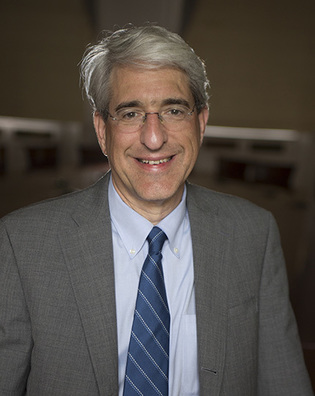 loading
loading
Q&A: Peter SaloveyWhys and wherefores of the new collegesThe Yale Alumni Magazine regularly holds a conversation with Yale president Peter Salovey ’86PhD to provide a forum in which alumni can learn his views. (Interviews are conducted both in person and by e-mail and condensed for print.)  Mark OstowIn this issue, Salovey talks about the two new undergraduate residential colleges. View full imageY: The two new residential colleges are up and running, about ten years after the intention to build them was announced. How do they help to fulfill the goals you set for your presidency—a Yale that is more excellent, more unified, more innovative, and more accessible? S: Increasing the number of spaces available in Yale College fits squarely within my goal to create a more accessible Yale. Most people think of “accessibility” in terms of financial resources—and we have aggressively enhanced financial aid for Yale College students. The current program eliminates the expected contribution for families earning below $65,000 per year and significantly reduces it for those at other points on the income spectrum. Approximately 84 percent of the Class of 2017 graduated debt-free. But Yale receives about 32,000 applications per year; without the new colleges, we had only 1,350 slots. About 93 percent of applicants faced disappointment, and many of them would have thrived here at Yale and contributed enormously to the educational environment. At the end of the day, nothing can do more for access than having more opportunities for students to attend. I view expansion as a moral imperative: there are more extremely well-qualified applicants who would succeed in Yale College than can be admitted. With expansion, we can now enroll 200 more students per year. That increases the class size to about 1,550. After four years, we will be educating 800 additional students at Yale College—over 6,100 undergraduates in total, and we will do so without compromising educational excellence and the feeling of community for which a Yale College education is so well known. Y: We’ve heard from alums who wondered how that will affect the intimacy of the college. Some remember when there were fewer than 4,000 people here. S: I think about that a great deal: how to make sure Yale still feels like Yale. The residential college system is essential to Yale College, so we designed the colleges to embody the very best of that system. Each has the feeling of a small community within a larger one. We also wanted the common facilities in the new colleges to provide substantial space—not only for their own students but also to help accommodate the larger undergraduate population. So, for example, the dance studio in Benjamin Franklin College is shared by all of Yale College. The dining halls are large enough to serve visitors from other colleges. The site itself is in an area that can accommodate more students without feeling crowded. The north end of campus, which has such exciting science facilities, has always felt a bit underpopulated. And nearby are the Yale Health building, classrooms, and the Farmington Canal walkway. All are amenities that will help students in Franklin and Murray colleges feel connected to the rest of Yale. We have anticipated a larger undergraduate student body in other ways. For example, we increased the number of counseling staff at Yale Health and lengthened the hours of Payne Whitney Gymnasium and the Sterling Library. And of course, we addressed the most important factor: we pinpointed the classes where a 15 percent increase in the student body would be most noticeable and added faculty. We can also act nimbly if we discover areas of restricted “supply” in the face of student “demand.” For example, the introductory Spanish course was overenrolled this semester, but we were able to adjust quickly and meet the demand. We will continue to watch academic resources carefully as additional students enter over the next three years. Y: What results do you hope for from the expansion? S: Yale’s mission is to educate leaders who serve all sectors of society. Adding more students will have an impact on the world. Many of our current students and alumni take Yale’s leadership and service missions very seriously. Let me give you just two examples. A senior named Victor Wang cofounded a nonprofit that collects used prosthetic limbs that no longer fit their owners, remodels them, and provides them to people in Vietnam. Many Vietnamese patients cannot afford new prosthetics, and there is not a mechanism to redistribute them within the US. Another senior, Henry Iseman, is part of the team. They have already fitted over 30 people in Vietnam with prosthetic limbs, and they expect to reach hundreds by the end of the year. And a Yale College student, Anna Hwang, teamed with students from the Graduate School of Arts and Sciences and the School of Management on a startup called RxAll. RxAll aims to protect patients from exposure to counterfeit drugs by using a machine learning spectrometer to authenticate products. Anna uses what she is learning in applied mathematics and economics at Yale in her role as RxAll’s director of e-commerce analytics and client engagement. Who would not want to bring more students like these to Yale, give them the benefit of a Yale College education, and watch them change the world?
The comment period has expired.
|
|